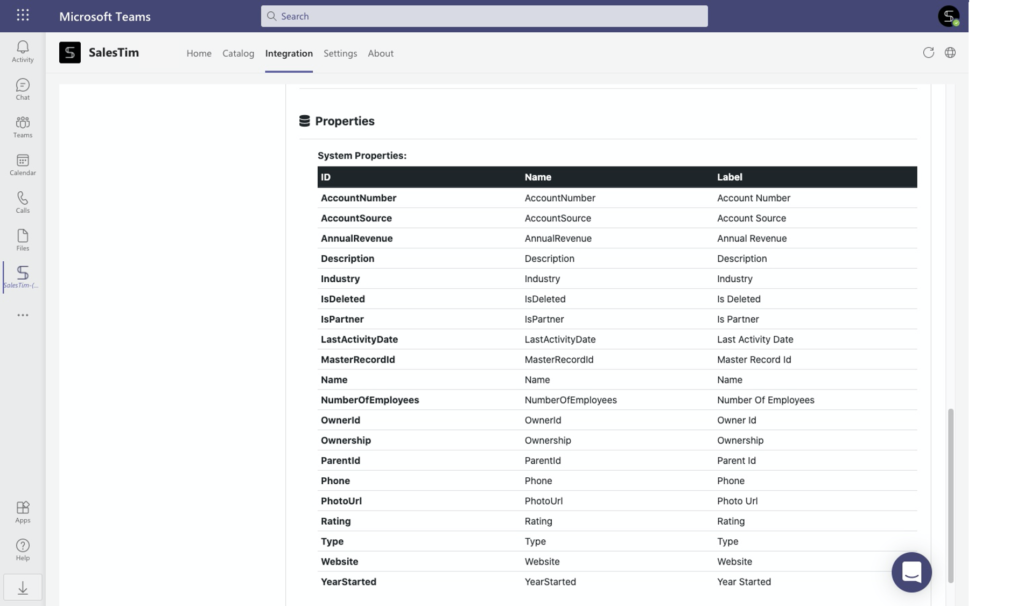We know how performing effective account management is important for every business. As an account manager, you need to build strong and trustful relationships with customers and grow the original business partnership through upselling and cross-selling activities. Therefore, for companies looking to improve client retention, building a robust account management team is crucial. In today’s article, we’re describing how to improve your collaboration on account management with Key Account Management Template for Microsoft Teams.
Why do you need a Key Account Management Template in Microsoft Teams?
Improve operational management
With Microsoft Teams templates you’re able to improve your operations with the same level of execution from one account management team to another. Hence, manage customer relationships in a structured workspace without a mess in teams.
Create a standard execution playbook
With Account Management templates you can create a standard execution playbook for building relationships with your customers. Provide your team a structured workspace with all the content and tools they need. This way, they will always be ready for different scenarios.

Improve collaboration
On one side, account managers must communicate with customers and develop long-term relationships with them. On the other, account managers collaborate with other colleagues from sales and customer support teams. With a structured and simple workplace, you can improve your collaboration and grow your business while following your company’s vision and mission.
Reduce time spent on performing manual tasks
Automate team creation and spend less time on building collaboration space and managing Teams governance. Therefore, you will have more time for important tasks, such as ensuring customer satisfaction and building long-term partnerships.
Build strong relationships with customers
Finally, when your internal processes are streamlined and structured, you can share externally the right content at the right time. By quickly responding to the clients’ needs and providing effective service solutions, you will build strong and trustful relationships with customers and partners.
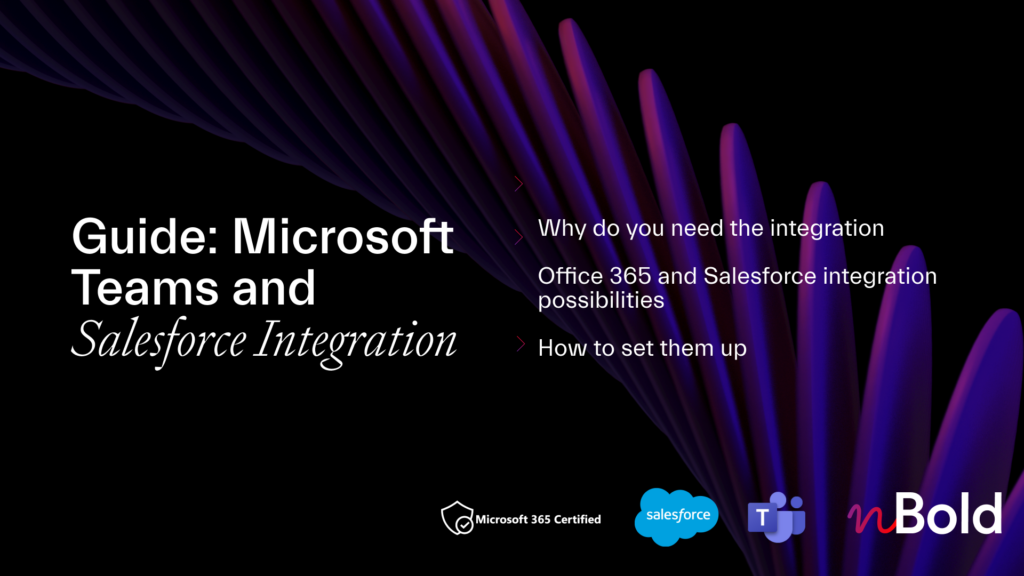
Guide: Microsoft Teams and Salesforce Integration
- Why you should integrate Salesforce with Teams
- All integration possibilities
- Most demanded use cases
- How to set up the integrations
Advanced Key Account Management Template for Microsoft Teams
Standard and Private Channels
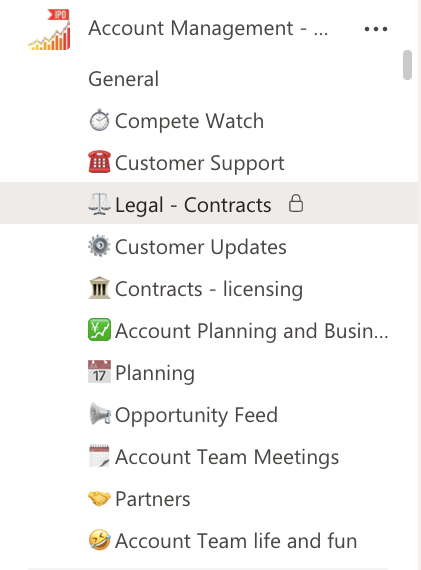
Create a team in Microsoft Teams for each of your key customers to develop relationships and provide high-quality services. You can create standard and private channels where your team can share content, updates, and news. Let’s see an example of the Key Account Management template with standard and private channels:
- Customer support – to collect customers’ feedback and quickly react on any needs.
- Planning – to manage daily tasks and develop a long-term strategy.
- Team meetings – to collaborate with sales reps, share internal news and set up customer meetings.
- Opportunity Feed – to retain customer’s businesses and develop those opportunities.
In addition, create Contracts Licensing private channels to share important financial documentation, agreements, and signed contracts.
File and folder management
Next, upload documentation and create folders to store and share files. Therefore, your team members will have quick access to important files and guidelines without loss of information:
- Account Management Guidelines
- Templates for contracts and agreements
- Your internal technical documentation, such as privacy policies, terms of service, etc
- Codes of practices, use cases playbook
- Account Management strategic plan, and so on.
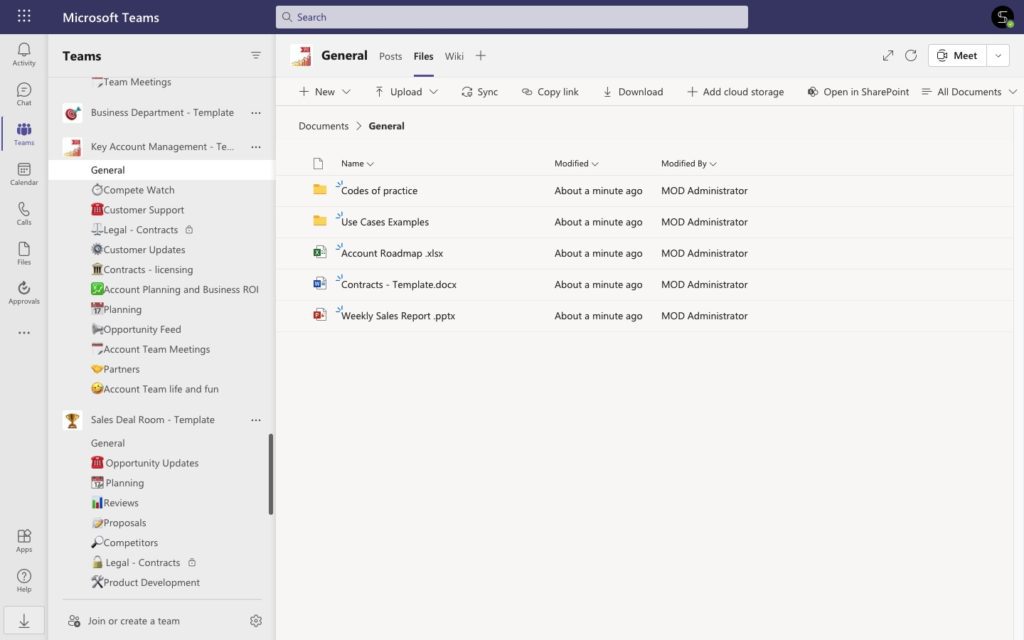
Learn about best practices for effective document management in Microsoft Teams
Pre-build set of tasks
Add planner as a new tab and easily manage the daily tasks of your account management team. With Planner, you can easily create buckets with steps and create boards with tasks for your team. Create a task, assign it to any team member, add checklists, attach files and links, and collaborate on tasks via comments and notes. Moreover, you can choose different Planner views, for instance, a Calendar to plan your workdays or Charts to manage progress and overdue.
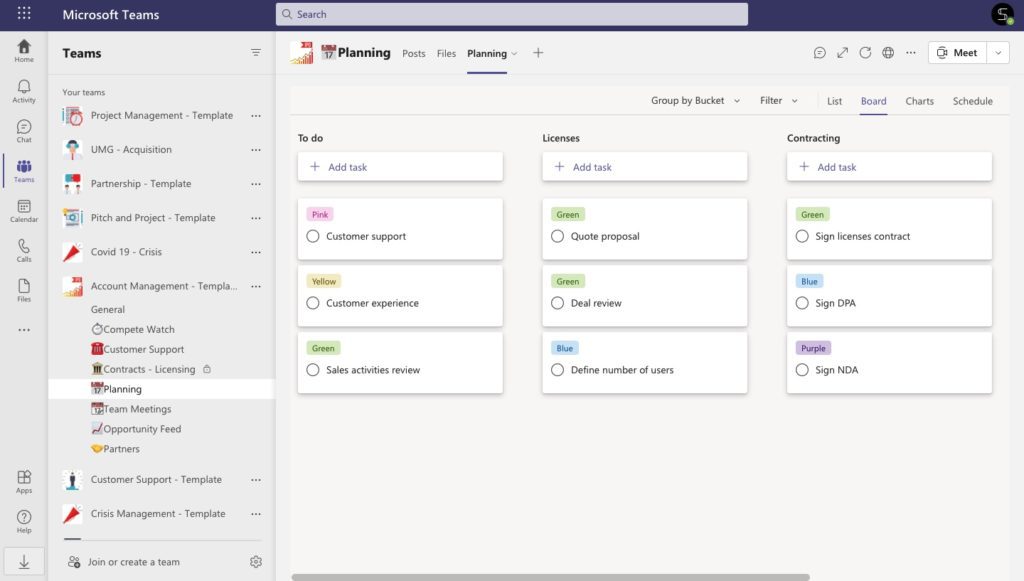
Set up meetings – Calendar Tab
Add Calendar Tab to your Team Meetings channel and have quick access to all upcoming events. Here you can set up meetings with your teammates to collaborate on service updates, product presentations, and develop long-term strategies to improve your customers’ relationships.
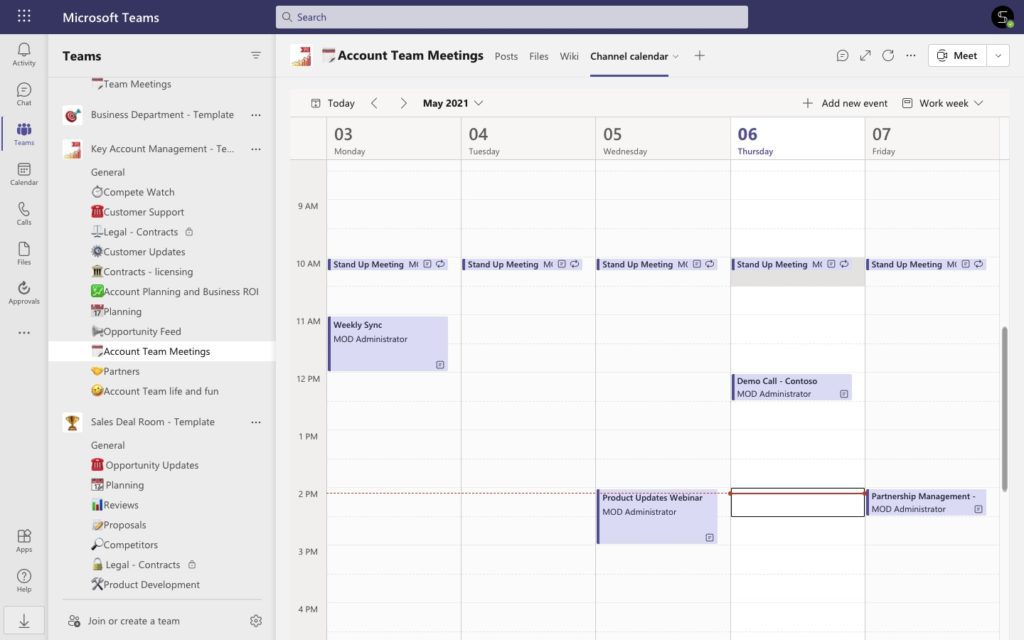
Moreover, set up online meetings with your customers right from Teams. Just send them a meeting link to join a conversation (this will work even if your customers do not use Microsoft Teams) Read more about Microsoft Teams Meetings in our blog.
Collect feedback from customers with Forms
Wondering how to quickly collect customer feedback? Create a form in Microsoft Form to collect customer responses and easily upload it on your website or just share it with links. Also, add this form as a new tab into your Customer Support channel, collect responses, and share results with your teammates. Moreover, with Power Automate you can manage notifications to stay informed with each new submission and quickly respond to any needs.
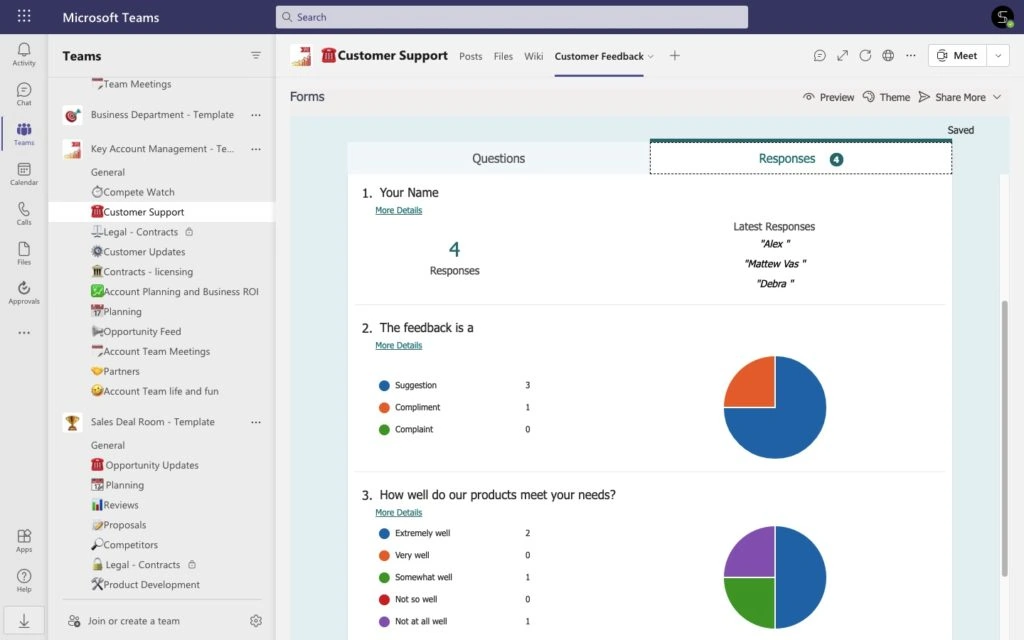
Read more about Microsoft Forms and Teams templates
Stay informed with company’s news
Your key account management team should stay connected not only with teammates but also with other departments in your organization such as Product Development, Financial, Legal, and others. Add a dedicated SharePoint site as a new tab into the General channel to help your teammates stay updated with your company’s news, upcoming events, and updates.
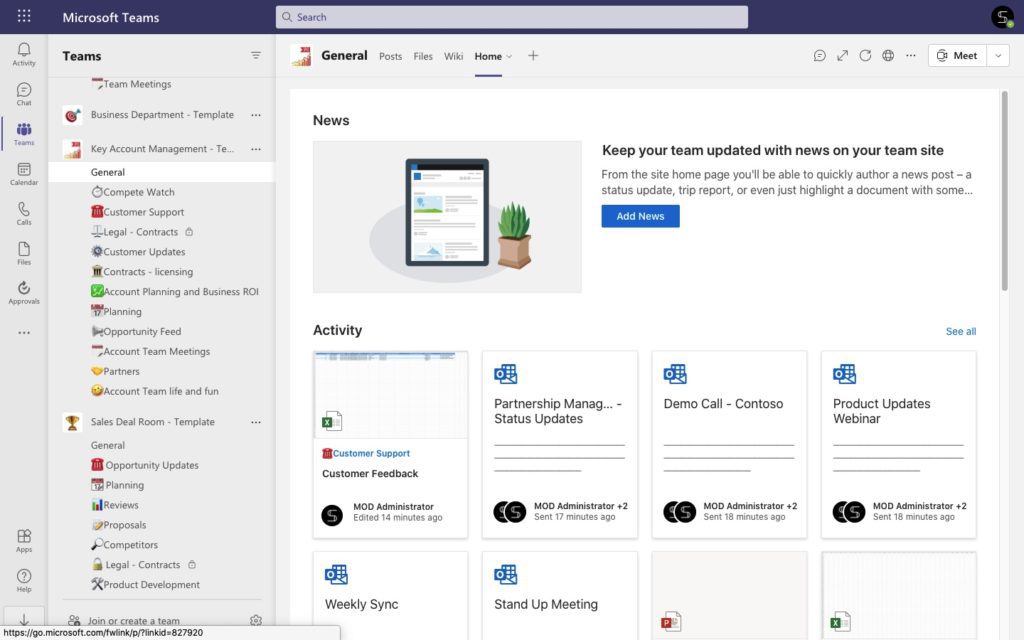
Get the right people
Finally, get the right people in your key account management team. Add your colleagues from the customer support department, sales reps, key account managers, and executives. Don’t forget to manage member permission to limit private channel creation and set up settings for guest access.
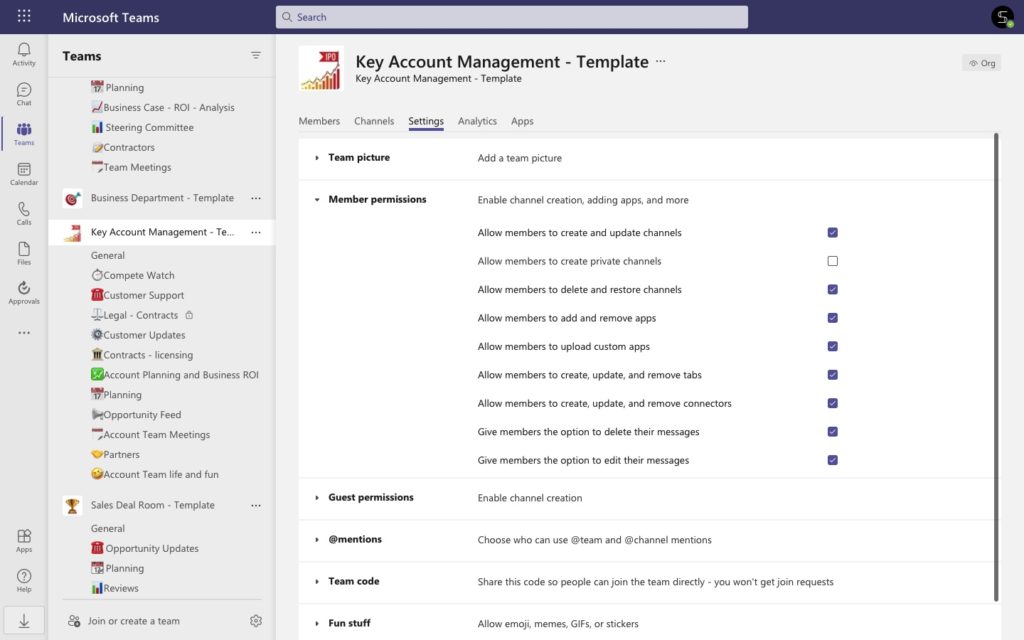
How to build Key Account Management Template in Microsoft Teams?
Next, let’s see how you can build an advanced Key Account Management template with copied channels, tabs with apps, and cloned files and folders.
Step 1. Build an original team. Create standard and private channels, upload files and folders, and add tabs with apps
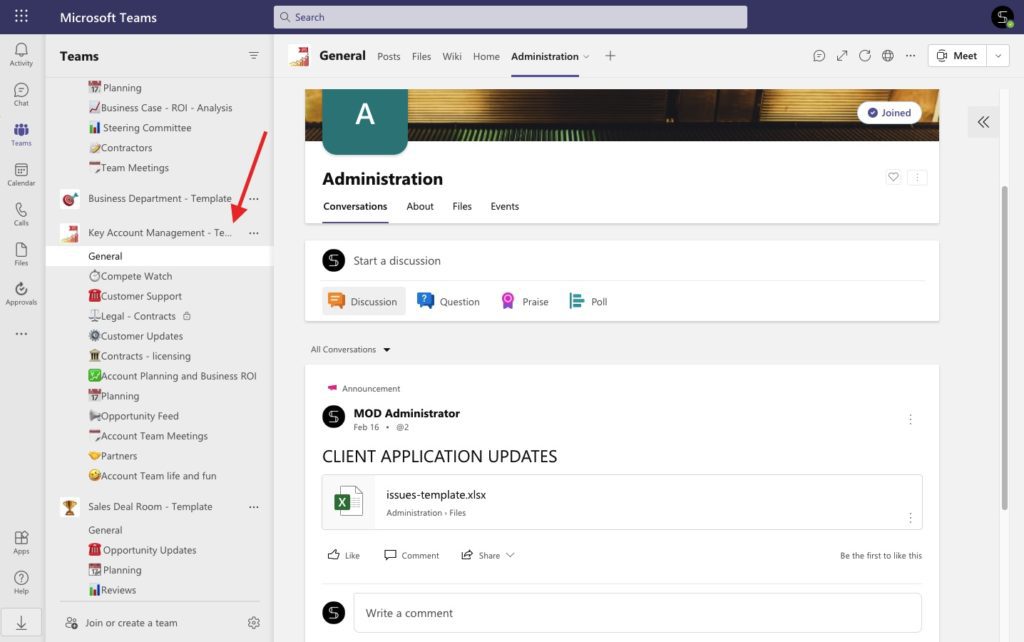
Step 2. Build Key Account Management template from the original team. To do this go to the Catalog tab and click on New Template
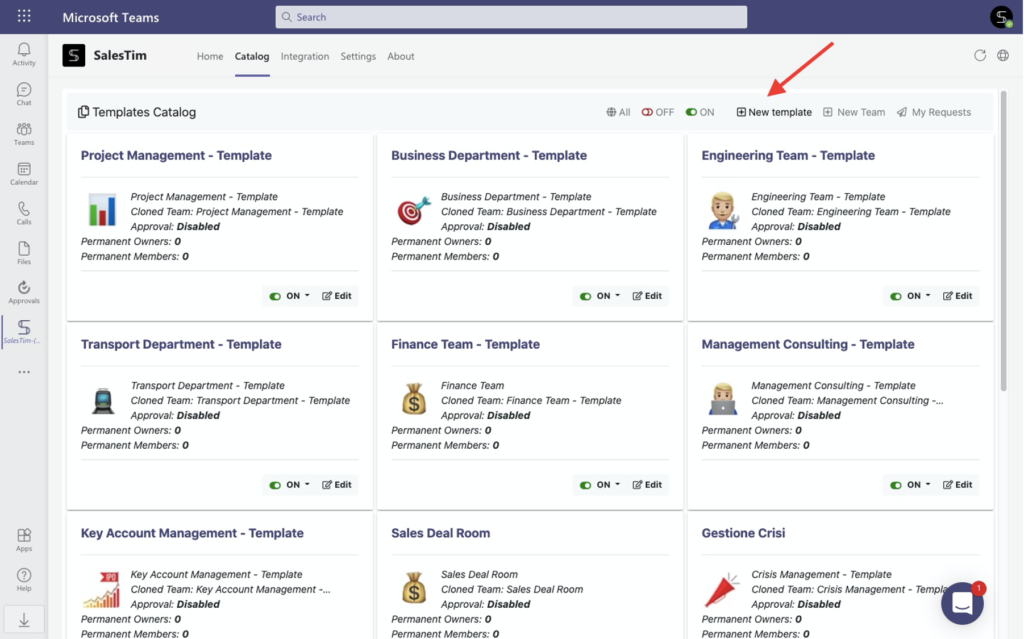
During Governance Policies:
- Set up a fixed or dynamic naming convention to get new teams with a right name
- Define who can create teams from your template based on the user’s Azure AD data
- Add permanent owners and members to get automatically added users
- Enable approvals to set up the additional approval process of team creation
- Delegate administration and define who can manage templates and integrations
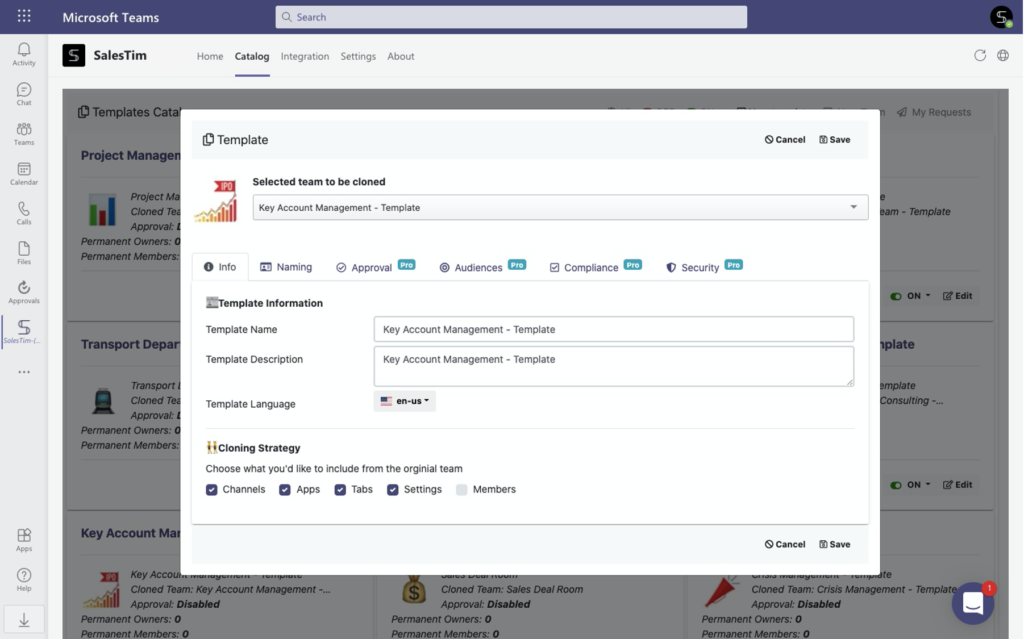
Step 3. When the template creation is complete, add it to your own template catalog. Account management, sales deal room collaboration, project and crisis management, and so on.
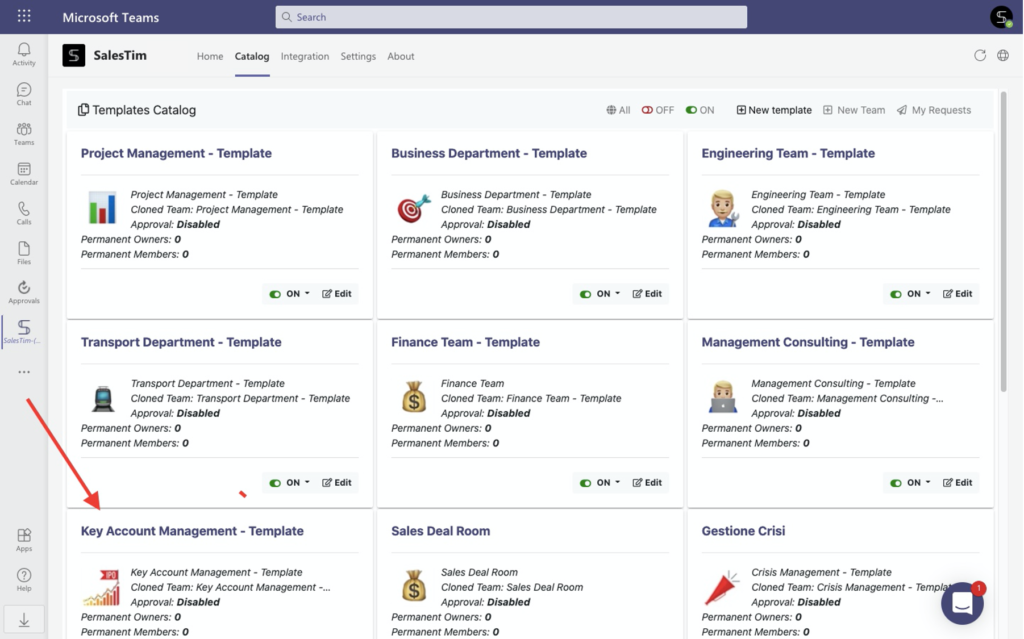
Step 4. It’s done! Now, end-users will be able to create dozens of fully provisioned teams from your templates catalog. Create Key Account Management template just once and allow your colleagues to create teams in bulk for each new account.
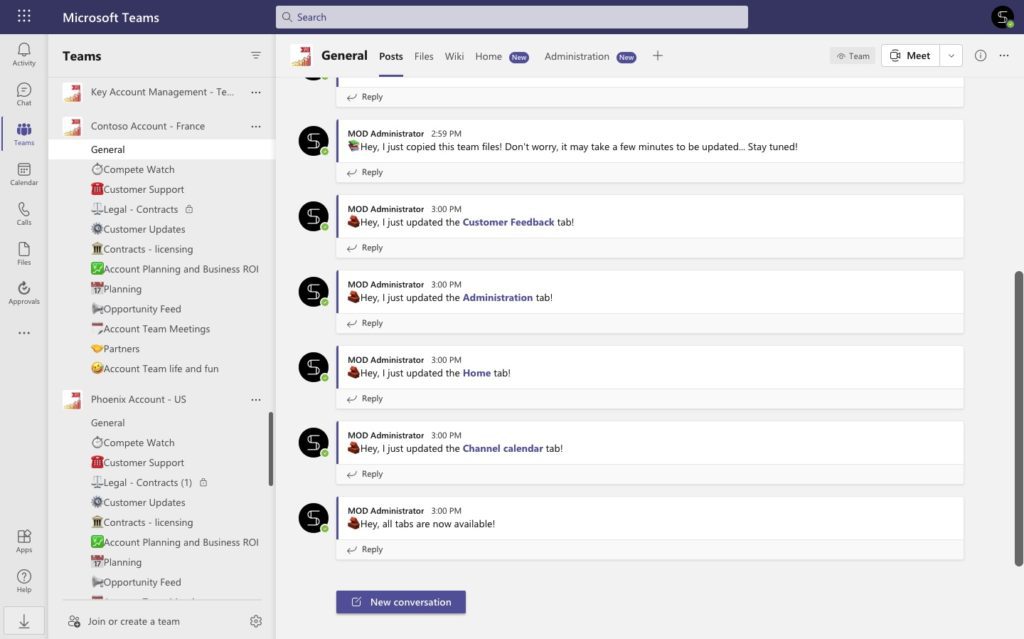
Integrate Salesforce with Microsoft Teams templates
With SalesTim for Salesforce, you’re able to integrate your daily usage apps right to your Teams environment with Microsoft Teams templates. This gives you the possibility to automatically create teams from templates when a certain event is occurring in your 3rd party app. Today we will talk about Salesforce and Teams integration. But this system will also work with other CRMs, such as Dynamics 365, Zoho, HubSpot, and so on.
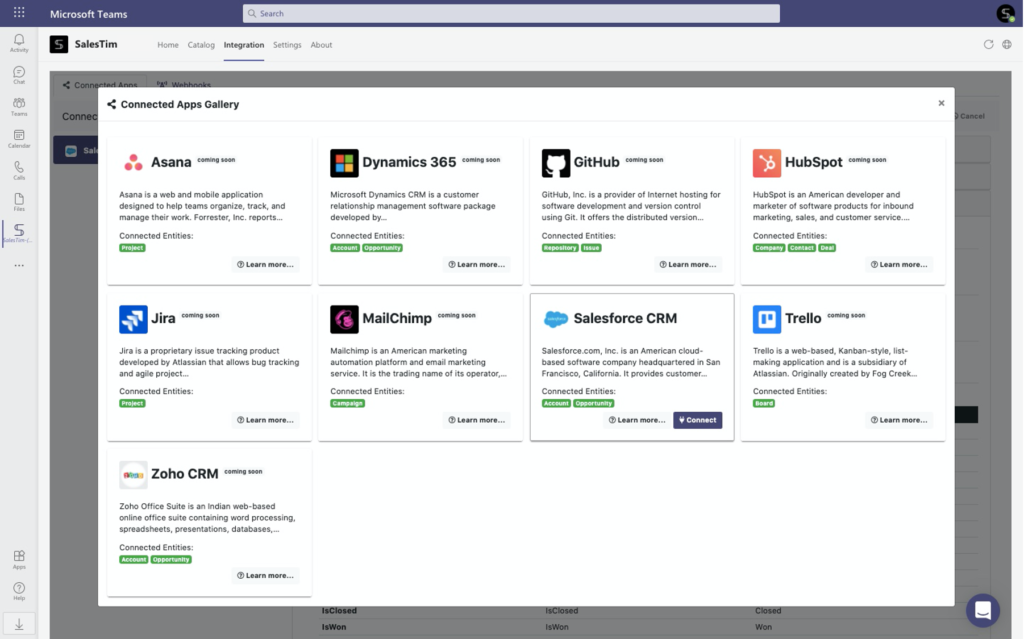
Get automatically created team when an account is created
First, with Salesforce and Teams integration you can get automatically provisioned teams from the template when a new account in Salesforce is created. Therefore, you can save your time and quickly create new collaboration space for each of your new key accounts in salesforce. For a new Account created in Salesforce, you’ll get a team packed with files, folder structure, tasks for account planning, and guidelines from the intranet. This will allow your colleagues to develop customer relationships even if they don’t have a Salesforce license.
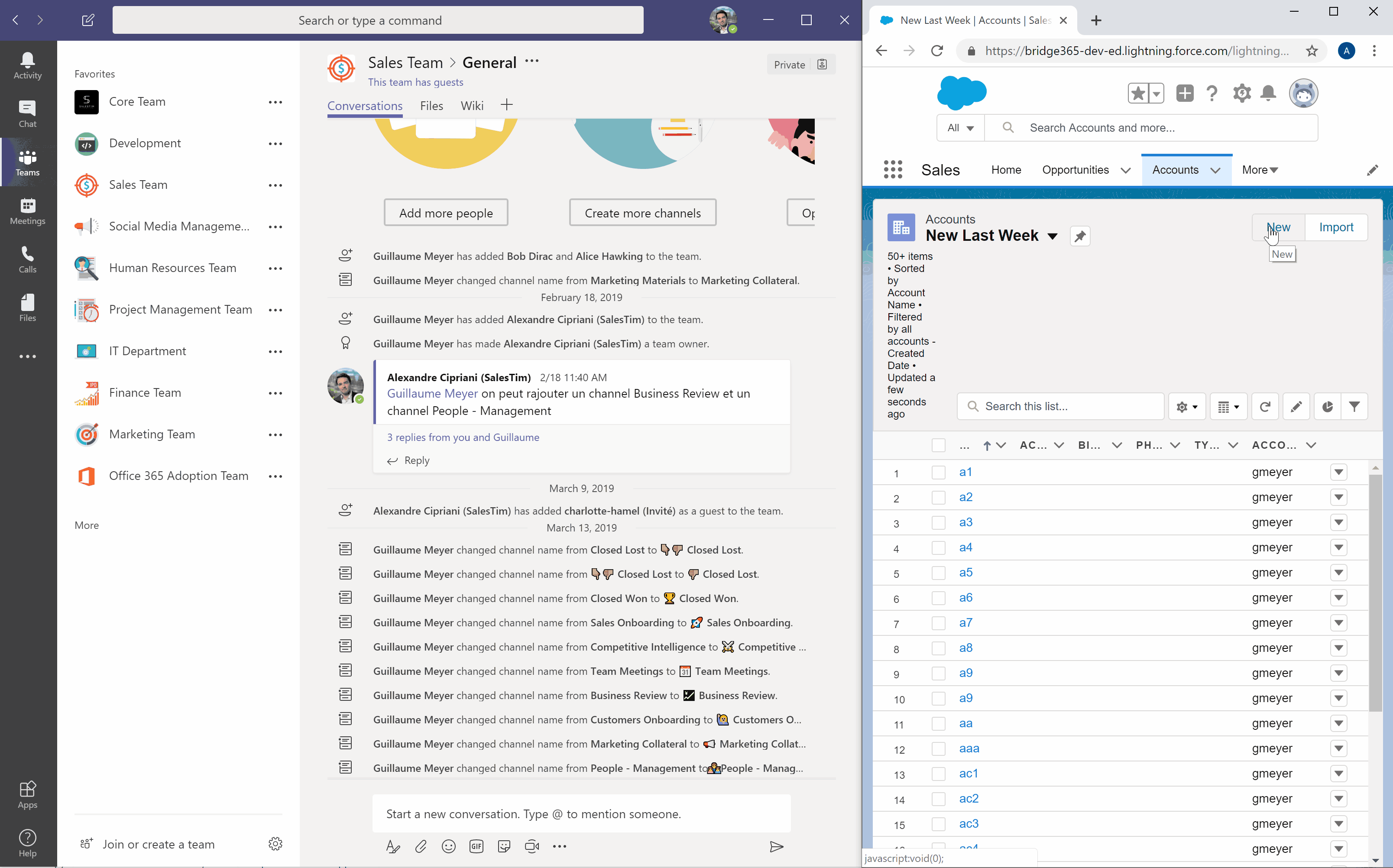
To do this, you need to manage Salesforce and Microsoft Teams connection using Integration tab in SalesTim app.
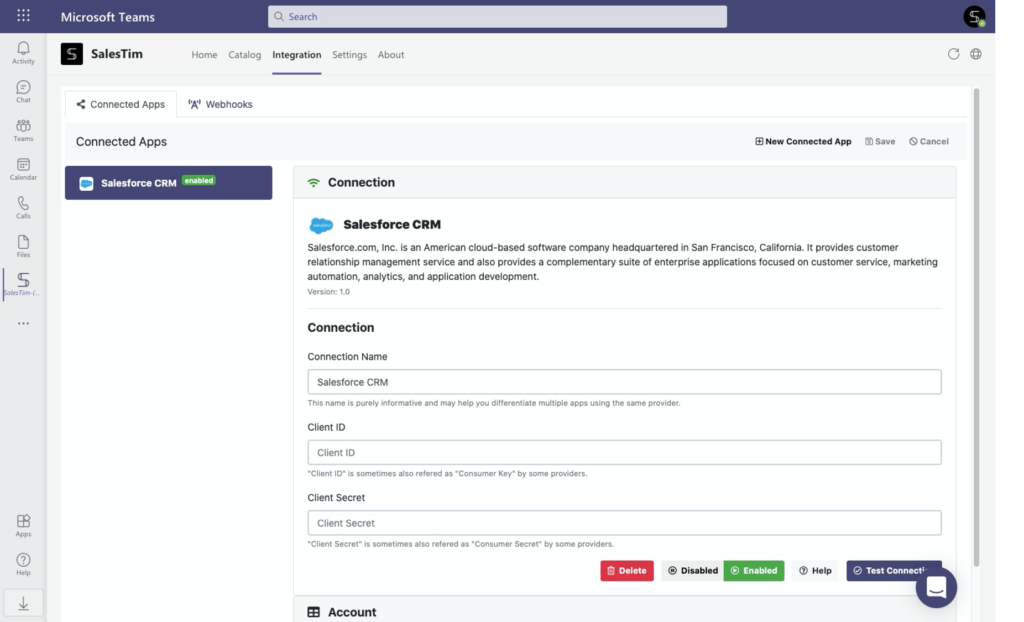
Next, define a sync option and choose “Sync with a team”. Then choose the Key Account Management template that you’ve built before.
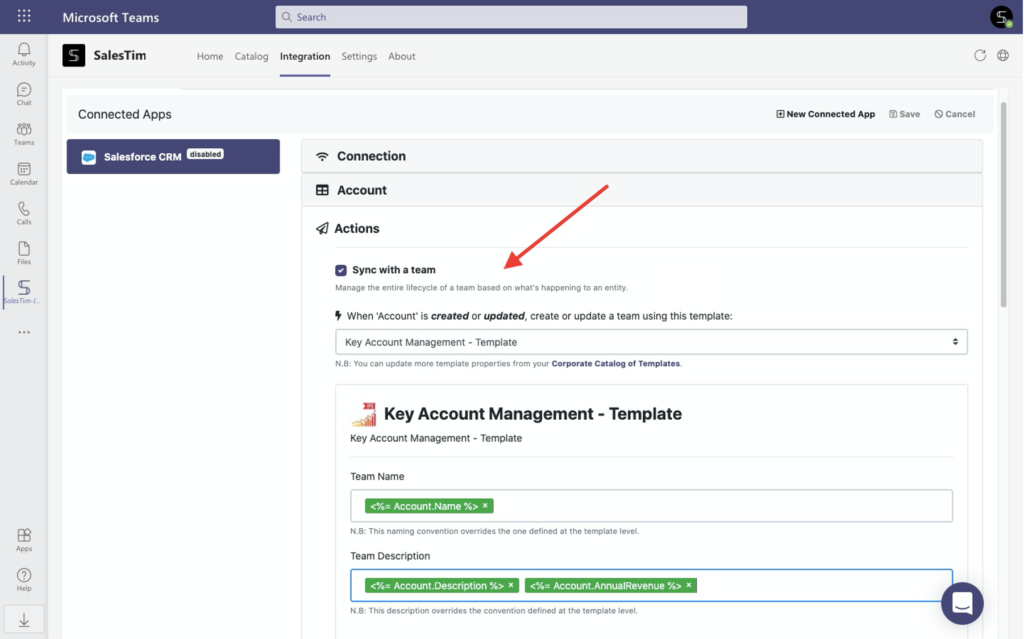
Moreover, you’re able to set up naming policies and build rules based on Salesforce data for team name and description.
It’s done! Now, when a new account in Salesforce is created, you will get fully provisioned team in Microsoft Teams with pre-defined name, channels, tabs with apps, right people, and settings.
Get channel in a right team when an account is created
You do not need to create an entire team for a single deal? Choose an option “Sync with a channel”. Therefore, an automatically created channel will appear in a needed team when a new account is created in Salesforce. With this option, your team members can collaborate on Accounts in the right channel without missing information.
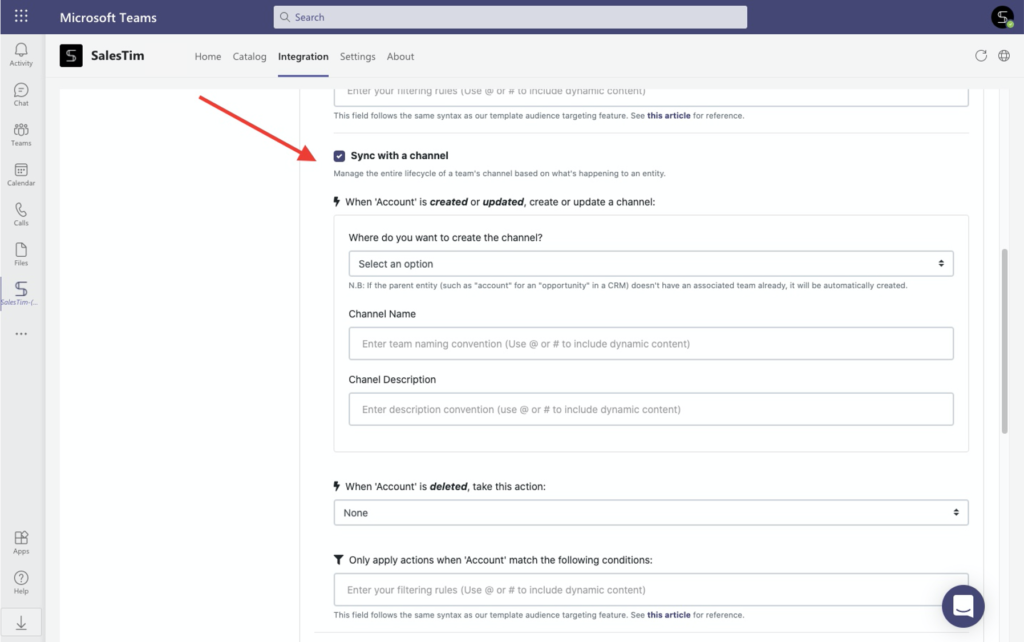
Delete or archive teams
Next, so as not to overload your Teams interface and reduce the number of unused teams, you can automatically delete or archive teams in Microsoft Teams when an account is removed from Salesforce.
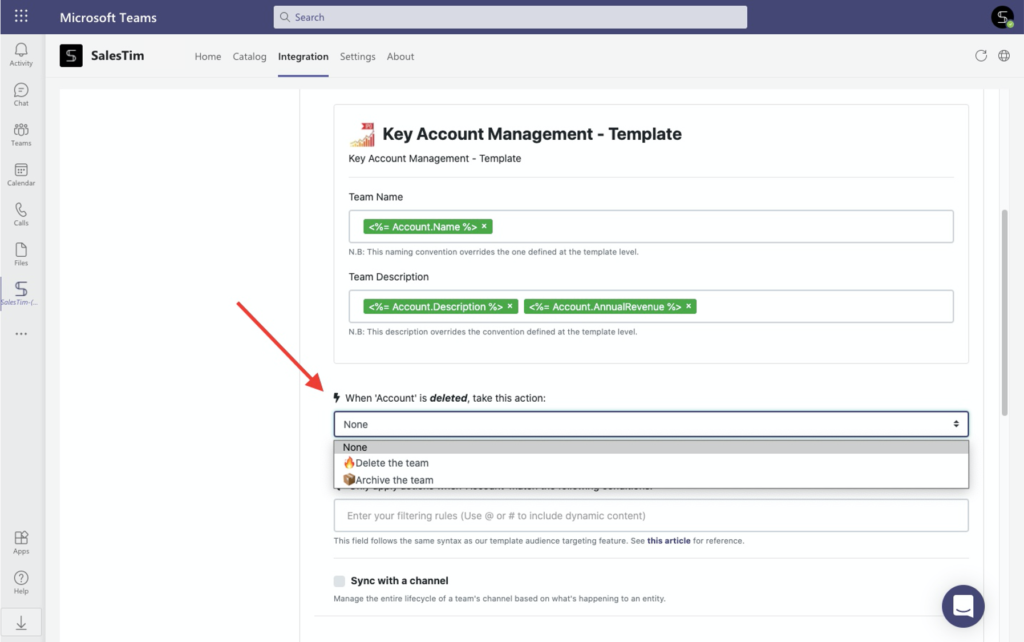
Set up additional properties
No need to create teams for each of your accounts in Salesforce? With additional properties, you can define when you need to create a team in Microsoft Teams. This could depend on Account’s industry, stage, probability, amount, and so on. Capabilities are endless!
